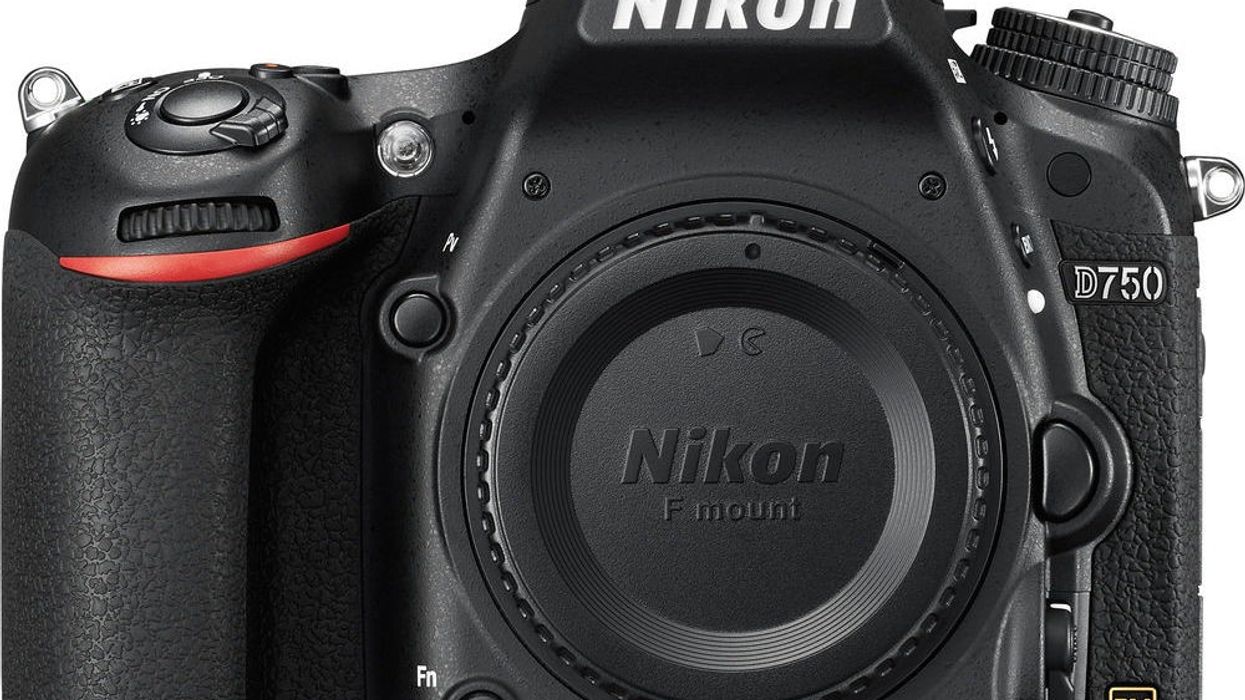New Nikon D750 DSLR Brings 1080p 60fps & Tilting Screen
Along with other announcements today, Nikon unveiled their newest full-frame DSLR, the D750.

While a huge step up from the D700 which was released before we really had video in DSLRs, the naming scheme now means it's more of a camera between the D610 and the D810. It has the same sensor as the D610, but should prove to be better as a video-shooting camera, with 1080p 60fps, and full control of aperture, shutter, and ISO settings while recording (which has not always been the case for all Nikon DSLRs).
Here are the specs of the Nikon D750:
- 24.3MP Full-frame CMOS Sensor
- EXPEED 4 Image Processor
- 3.2" 1,229k-Dot RGBW Tilting LCD Monitor
- Multi-CAM 3500FX II 51-Point AF Sensor
- Photo ISO: 100 - 12800 (Extended Mode: 50 - 51200)
- 1920 x 1080 at 24, 25, 30, 50, 60fps
- 1280 x 720: 24, 25, 30, 50, 60fps
- Video Clip Length: 1920 x 1080 at 60 fps: 29 min. 59 seconds
- Video ISO: 200 - 12800
- Dual SD Card Slot
- Continuous Autofocus During Video
- Continuous Image Shooting Up to 6.5 fps
- 91k-Pixel RGB Sensor and Group Area AF
- Built-In Wi-Fi Connectivity
- Time Lapse Shooting & Exposure Smoothing
- 1/8" Headphone, 1/8" Microphone, HDMI C (Mini), USB 2.0
- Uncompressed HDMI 8-bit 4:2:2
- Availability: September 2014
- Price: $2,300 Body Only, $3,600 with AF-S NIKKOR 24-120mm f/4G ED VR Lens
Here is some footage:
And here is the BTS video:
Some documentation made mention of reduced moire in video mode, so hopefully this camera can join some of the others in this range that have all but eliminated unsightly rainbow patterns. This obviously isn't a leap technologically, and it doesn't have 4K, so you're only buying this camera if you have specific needs based on taking stills, or you prefer the images over another model (which, when you remove cost and usability, should really be the next factor looked at).
Here is a bit more on the video features:
The EXPEED 4 processing power extends beyond still imaging performance to benefit full HD 1080p video recording in multiple frame rates up to 60 fps. During recording, fully manual control is possible over shutter speed, aperture, and ISO settings, along with the ability to utilize Auto ISO adjustment in manual mode. Zebra stripe highlighting can be applied to aid in controlling overexposure during recording, too, along with in-camera Picture Control profiles, custom tone curves, and a flat profile to benefit color grading applications. Additionally, multi-area mode allows you to narrow your effective field of view during recording, in FX and DX settings, to offer greater perspective versatility during shooting.
Recording to an optional external recorder is possible in order to gain uncompressed 4:2:2 8-bit output through the HDMI port and, when recording externally, use of the camera's LCD monitor for live view monitoring is possible. Power aperture control is supported during external recording, too, as well as when recording to internal memory cards. Simultaneous recording to both memory cards and an external recording device is possible for instant backup and duplication of files, and 2MP 16:9 still images can also be recorded simultaneously during video recording. In-camera video trimming is possible as well, along with the ability to select the movie's saving destination.
In regard to audio recording, an in-camera stereo microphone can be used or, alternatively, an input is available for utilizing an optional external stereo microphone. Sound levels can be adjusted across 20 levels prior to and during recording, along with the ability to monitor audio via the headphone output.
Nikon also announced a full-frame 20mm f/1.8 lens, which will either be super wide on full-frame, or a normal wide on APS-C:
Source: Nikon D750 — B&H













